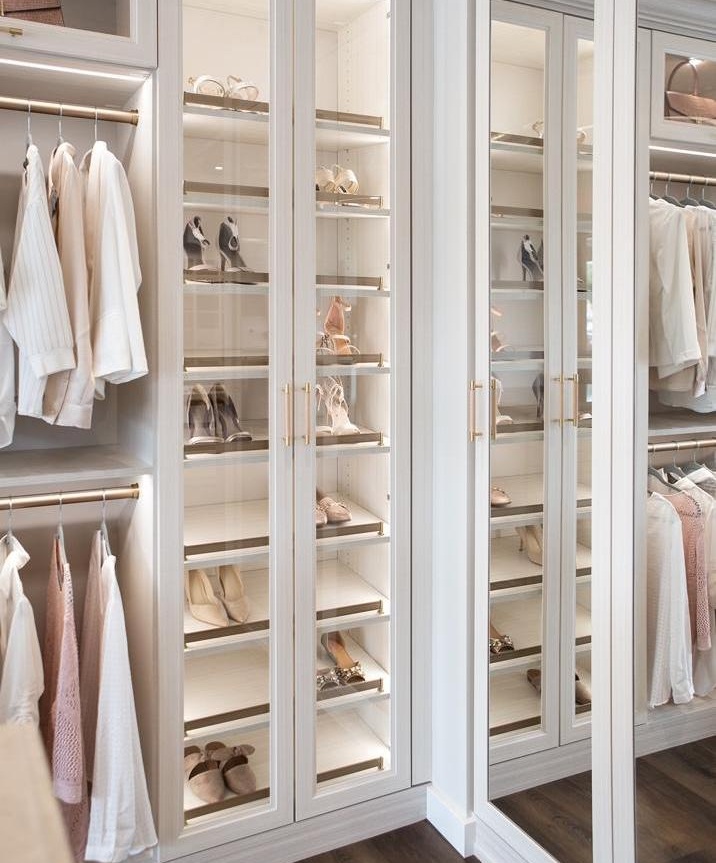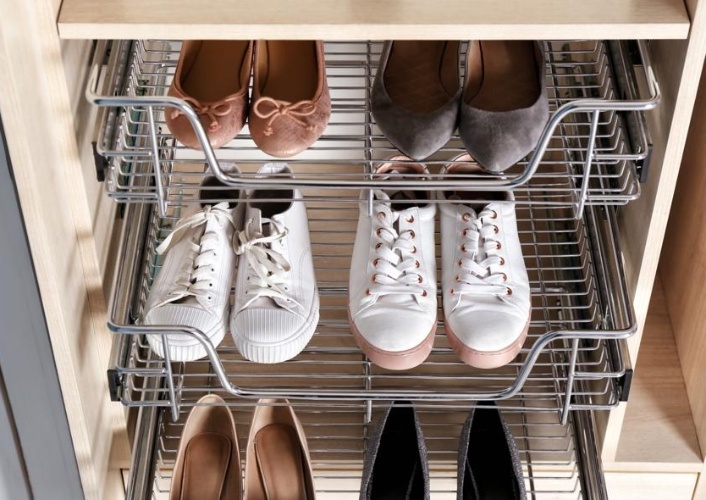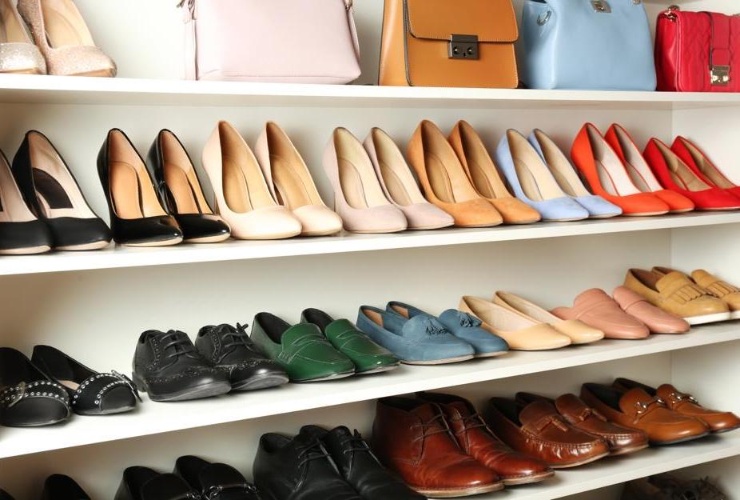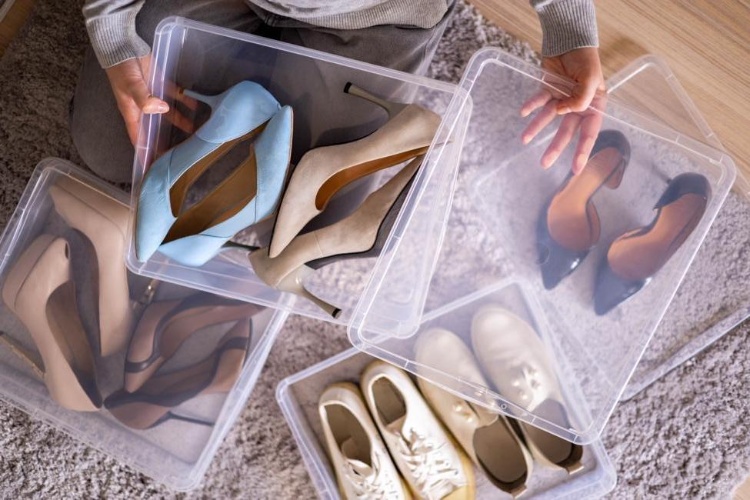
When it comes to designing custom closets with specific shoe storage needs in mind, there are several considerations that will help ensure your shoes have the proper home. Since shoes are bulkier than clothing, a large amount of space in your closet needs to be dedicated to your shoes. While there is no “one size fits all” approach to storing your shoes, pre-planning your space can go a long way to make sure your closet functions exactly as you need it to.
Here are some factors to consider when planning shoe storage within a custom closet:

Location & Quantity: First, consider the number of shoes you have and where they will be stored. Some homeowners like to keep their shoes in the master closet, while others prefer a dedicated space near the main entry such as a mudroom or entryway closet. Figure out what is the ideal location for you, paired with the quantity of shoes that need storage in order to plan your space accordingly.

Shoe Types: Different types of shoes require different storage solutions. Boots, high heels, sneakers, and flats all have unique storage requirements. Consider whether you want open shelves, closed cabinets, or a combination of both. Incorporate shelving units with adjustable cubbies, racks and shelves that are designed to accommodate specific shoe types. For example, include taller shelves or boot hangers for boots and narrower shelves for heels. This will ensure your space can accommodate various shoe sizes and styles.

Design Aesthetic: Ask yourself what the desired look is that you’d like to achieve. Many customers like the look of slanted shoe shelves as it conveniently stores and displays your shoe collection in an elegant way, making it easy to quickly find what you need. On the contrary, some customers exclusively keep their original boxes which means more open shelving is needed. Ensure that your shoe storage solution allows for the visibility you desire and makes your shoes easy to access. Transparent or glass-fronted cabinets, shoe display shelves, or pull-out drawers with clear fronts all make it easier to find the shoes you need quickly. Determining this upfront will help ensure your closet is not only beautiful, but functional as well. You can also consider incorporating decorative elements, such as lighting, decorative molding, or glass accents, to enhance the visual appeal of your shoe storage area.

Organization & Optimization: Make the most of your space by utilizing vertical storage options. Install shoe racks or shelves that stack shoes vertically to maximize the use of available space. Over-the-door shoe organizers or hanging shoe bags can also be great space-saving solutions. Once the closet is installed, consider organizing your shoes by type, color, or occasion. This will make it easier to locate specific pairs and help keep your closet neat and organized. Utilize labeled bins, shoe dividers, or hanging shoe organizers to keep everything in order.

Shoe Care: If you have special shoes that require extra care, incorporate storage options that protect them. Shoe boxes, fabric shoe bags, or built-in cushioned compartments can help preserve the condition of delicate or expensive shoes. Proper ventilation is also crucial for maintaining the quality of your shoes. Choose storage solutions that allow for air circulation to prevent odor or moisture buildup. Avoid overcrowding shoes to ensure each pair has enough breathing space.
Planning for all of the items you need to store – especially something like multiple pairs of shoes – can take a little effort but is well worth it in the long run to ensure your closet space fits your daily needs.
If you are thinking about upgrading to a custom closet, we’d love to chat! Our talented designers can help walk you through a series of simple questions to help pull together all the necessary details. Contact us for a complimentary consultation to discuss your needs.
